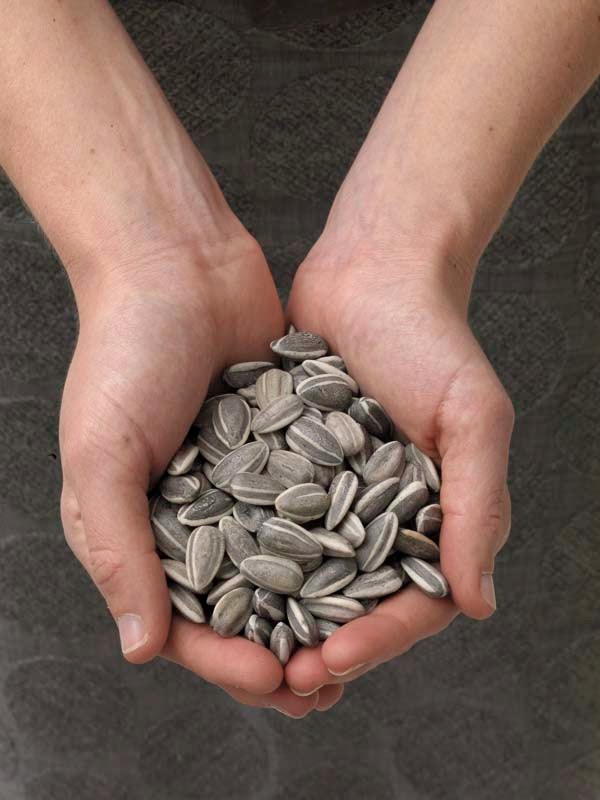 |
| Bai Yiluo. Spring and Autumn 1, 2007; wood, metal, farm tools. Courtesy of White Rabbit Gallery. |
COMMUNE at White Rabbit Gallery of Contemporary Chinese Art
The word commune, whether used as a noun or a verb, has complex connotations. From earnest Utopianism to grim, state-enforced collectivism; from familial relationships and networks to our connection with the natural world—all of these possible associations are present in the new show at Sydney’s White Rabbit Gallery of Contemporary Chinese Art. From Judith Neilson’s impressive collection, curator Bonnie Hudson has selected works by twenty-three artists. They include representatives of the older generation that emerged in the 1980s and ’90s, characterized by transgressive experimentation and a merging of the local and global in their practice, through to young (in some cases, very young) artists whose work reflects their experiences growing up in the “new China.” Theirs is a world of chaotic energy, the newly globalised world into which Chinese people were catapulted by Deng Xiaoping’s socio-economic reforms, the transformative effects of which continue to convulse every aspect of Chinese life. As you might expect, an exhibition that explores this world has moments of both darkness and light. The artists examine the complex, shifting realities of contemporary China, including changing structures of family life, relationships between old and young, and the conflict between self-actualization and the collective past.
 |
| Xia Xing. 2010, 2010-2011; oil on canvas; 35 x 50 cm (x 60). Courtesy of White Rabbit Gallery. |
A series of paintings by Xia Xing embodies these paradoxes. The artist collects press photographs from the Beijing News, a mass daily with a circulation of 450,000. In 2007 he was working as a reporter at the paper and became fascinated with how it shaped public opinion and represented only selected aspects of daily life in a time of flux and change. Trained as an oil painter, Xia had found his subject. He began to paint the images he saw on the front page of the newspaper. For 2010, he reproduced one photograph for every day of the year, emulating the commercial printing process in a painstaking application of layers of cyan, magenta, and yellow. There is no caption, no headline; from the sixty closely cropped paintings shown here, we must guess what the images represent. Each alludes to a private joy, tragedy, or conflict that has been made—all too fleetingly—public. By preserving these ephemeral images, Xia Xing documents a particular time in China’s history, structured as a series of apparently unconnected fragments. We encounter the man whose hands were amputated by a criminal against whom he had given evidence, the parents of missing children, the forced demolitions and removal of people from their homes, the polluted rivers and lakes. We sense the artist’s horror at a never-ending catalog of disaster and anguish. The artist as witness—a continuing theme in China’s contemporary art.
 |
| Ai Weiwei. Sunflower Seeds, 2010; porcelain, 500 kg. Courtesy of White Rabbit Gallery. |
Bai Yiluo’s Spring and Autumn 1 (2007) is juxtaposed with these paintings. A life-size tree with branches fashioned from old farming implements, with outstretched rakes, shovels, and pitchforks poignantly evoking the dependence on the seasons, the rhythms of nature, the times of planting and harvesting that dictate the lives of those who farm the land. One is also reminded of the obsession with rural agriculture of Mao’s revolutionaries: the ill-fated campaigns to eradicate the sparrows during the Great Leap Forward that caused enormous hunger and hardship; the rustication programs that sent urban “educated youth” to toil on communal farms and “learn from the peasants.” The work is very beautiful, and in its restrained use of weathered, rusted found objects, it is reminiscent of Ai Weiwei’s continued use of the “things” that evoke China, from ancient urns to three-legged stools and Qing Dynasty tables. Ai himself is represented by a pile of his porcelain sunflower seeds, that street snack shared among friends in hungry times in the past. These sunflower seeds have multiple meanings. They may be read as a comment on the ancient traditions of porcelain manufacture and its significance in trade with the West, or as a critique of mass production in China, “the world’s factory.” The realization that each seed, apparently identical, is actually different, reminds us of the weight of China’s population. The seeds also allude to Maoist iconography, which represented Mao as the sun, the Chinese people as sunflowers turning toward him. This is a subtle and clever acknowledgement of the tensions even today between individualism and collectivism.
Click HERE to read more